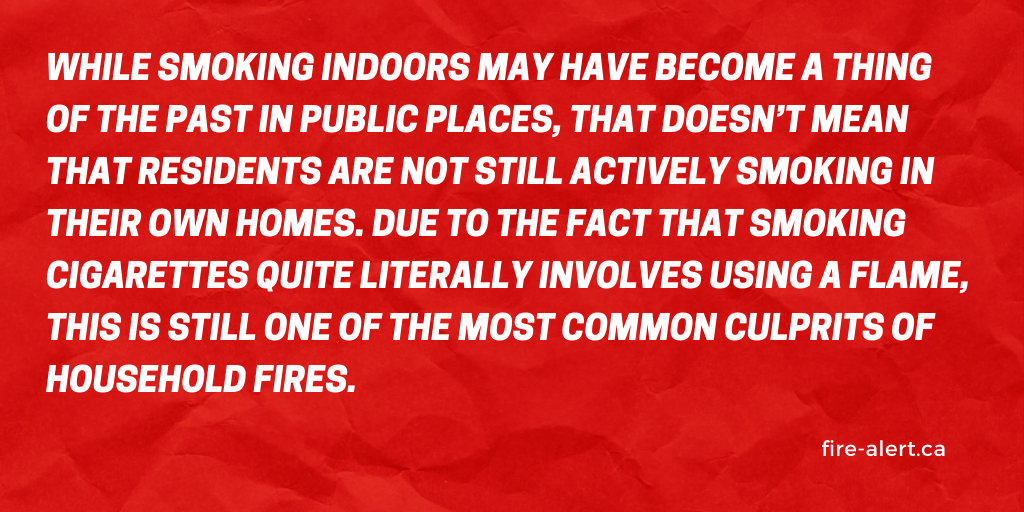The Three Most Common Causes of House Fires
Did you know that common, everyday tasks are most often responsible for house fires? Usually, these tasks start out as perfectly safe, but become a fire hazard when they are not properly attended to or go unnoticed. For this reason, it’s incredibly important to invest in proper fire safety equipment that will not only alert you in the case of an emergency, but will allow you to immediately extinguish small house fires. In this article, we take a look at the three most common causes for house fires, so you can focus on prevention – rather than having to deal with the dangerous aftermath.
Unattended Cooking and Cooking Equipment
For decades, unattended cooking and cooking equipment are a major cause of household fires. These types of fires can usually be easily prevented and are usually a cause of not keeping a close enough eye on your culinary masterpiece. There are a number of other factors that can contribute to cooking fires, so it’s important to be prepared in case you need to act quickly to extinguish one.
Fireline.com tells us more about why unattended cooking and cooking equipment is one of the leading causes of household fires:
“The most recent piece of data from the NFPA show that cooking accounts for about half of all house fires reported every year. Almost half of these fires will cause injuries, and they’re the second leading cause of death in house fires. Since the 1980s, the amount of deaths and injuries has fluctuated with no real trend up or down. Most house cooking fires are smaller fires that do not spread beyond the pan, oven, or container in which they started. While these are considered smaller fires, more than half of the non-fatal injuries were caused when people tried to control the fire. Cooking grease, oil, and other fats are the top causes of fires that begin in the kitchen. Fire suppression systems and proper fire safety protocols can help you in case of a cooking fire.”
Cigarettes and Smoking

While smoking indoors may have become a thing of the past in public places, that doesn’t mean that residents are not still actively smoking in their own homes. Due to the fact that smoking cigarettes quite literally involves using a flame, this is still one of the most common culprits of household fires.
Fuse Insurance explains what you can do to prevent fires caused by cigarettes and smoking:
“According to the National Fire Protection Association (NFPA), the leading cause of fire fatalities comes from the use of smoking materials. Cigarette butts and ashes can cause beds, curtains, carpets, and other furniture to ignite in seconds. If you are smoking, do it outside when possible, or use an ashtray to reduce your fire risk. Do not put out cigarettes in planters or potted plants, as potting soil contains peat moss. Peat moss will smoulder for hours then eventually ignite, leading to a significant fire in minutes. This is one of the primary causes of catastrophic fires in Canadian multi-family residences.”
Heating Equipment
It will come as no surprise that heating equipment is another leading cause of house fires, with space heatings being responsible for a large number of cases. Simply leaving a flammable object too close to a space heater can quickly cause a fire, making these portable devices a significant fire hazard.
FirstAlert.com tells us more on how you can prevent heating equipment from starting a potentially devastating house fire:
“When the weather turns colder, we are going to heat our home. Space heaters should be used if only a small portion of your home needs to be heated. Keep your space heater away from anything that could easily catch fire, including curtains, laundry, blankets, and furniture. If your home relies on a furnace during the winter, call a professional to get it inspected once a year to ensure it is running properly. Carbon monoxide can be produced by any fuel burning device, like your stove or furnace. For protection against a possible carbon monoxide leak, have carbon monoxide alarms. Alarms should be installed on every level of your home, outside of each sleeping area, and inside every bedroom. Test the alarms monthly to ensure it is functioning properly and replace the batteries every six months.”
Fire-Alert takes pride in equipping homeowners with all necessary fire safety devices to ensure the well-being of families across the nation. Reach out to us using our contact form to find out more.